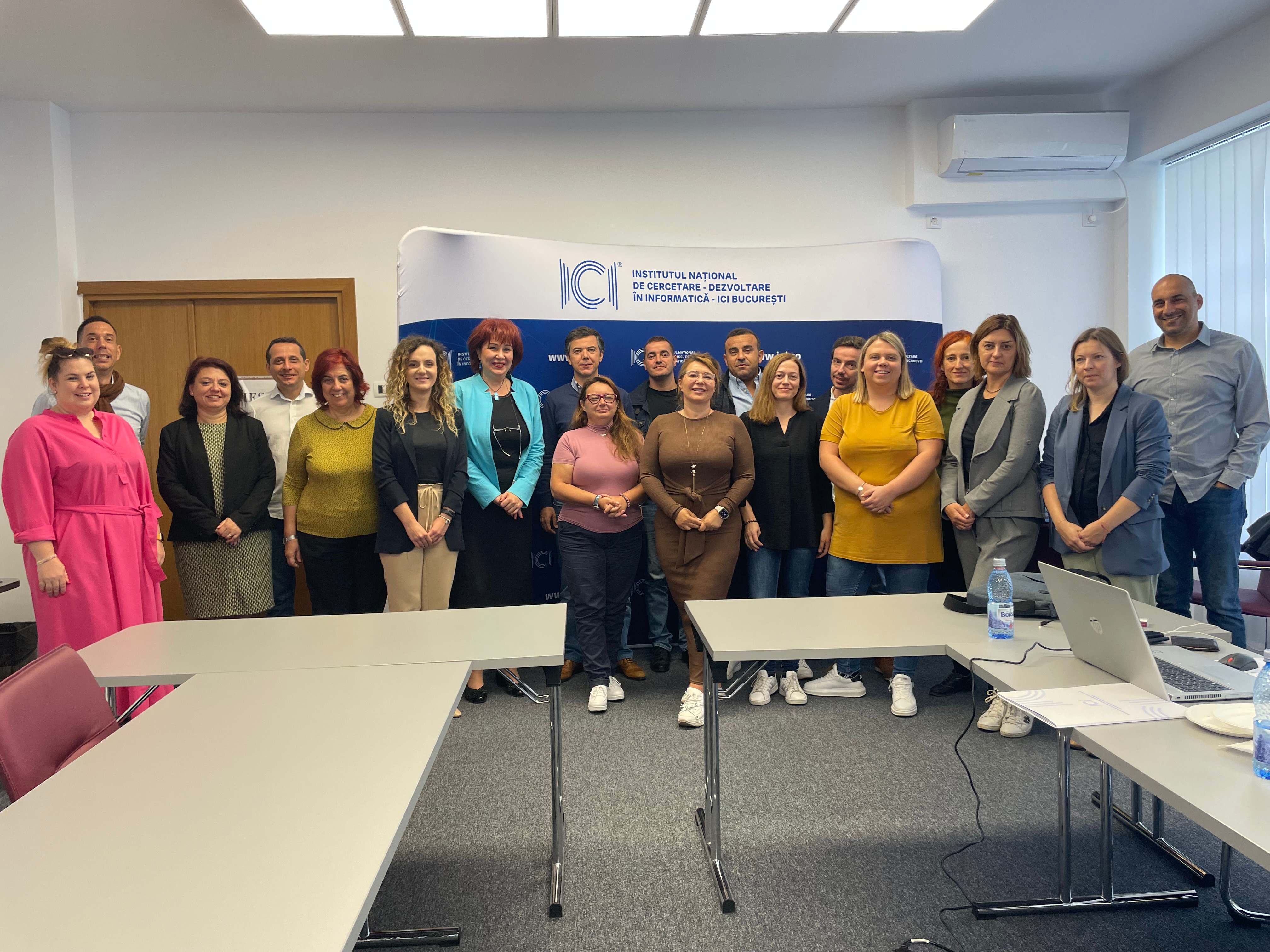
HoCare: Successful Interregional event in Romania
Interregional Seminar and Workshop "Regional responses to COVID-19 crisis on Home Care ICT sector" in Bucharest, Romania on 20-21 Sept.,
Aging of the population is challenge for all EU regions. But it means at the same time also an opportunity for growth and jobs as there is created great potential to deliver innovative solution for home care. Common challenge in all HoCare regions is unlocked potential to delivery innovation it this field.
In total, 3 International Thematic Workshops will be organized within HoCare project each covering one thematic sub-objective of the HoCare project.
Watch video from 1st International Thematic Workshop (Funchal, 27 January 2017):
Watch video from 2nd International Thematic Workshop (Budapest, 27 and 28 March 2017):
Watch video from 3rd International Thematic Workshop (Slovenia, 7 and 8 June 2017):
Objective of HoCare project is to boost delivery of home care innovative solutions in regional innovation chains by strenghtening of cooperation of actors in regional innovation system using Quadruple-helix approach. Quadruple-helix is an innovation cooperation model or innovation environment in which users, businesses, research actors/universities and public authorities cooperate in order to produce innovations - government, industry, academia and civil participants work together to co-create the future and drive structural changes far beyond the scope of what any one organization or person could do alone. This model encompasses also user-oriented innovation models to take full advantage of ideas' cross-fertilisation leading to experimentation and prototyping in real world setting.

Policy Change
HoCare aims for improvement of relevant Structural Funds thanks to the international policy learning. These improvements are planned to be at strategical level (by governance improvement) as well as practical ones (by support of high quality projects). As result HoCare promises to improve management structures (governance) of 7 Funds. This improvements at strategical levels will be complemented at practical policy level by generation of 10 practical projects funded from tackled Funds.
These results will be achieved mainly thanks to SMART outputs delivered and thanks to 4-dimensional international policy learning process. Initial content for it will be created by partners during Regional analysis, further investigated during 3 International Thematic Workshops. It will formulate 30 transferable Good practices and enable formulation of high-level outputs: 3x HoCare Policy Thematic reports and 3x HoCare Policy Transfer Reports. Collected knowledge will enable project to contribute to EU external policy learning by organizing 2 international and 8 National High-Level Policy Learning events. 800 participants will increase their proffesional capacities thanks to these events.
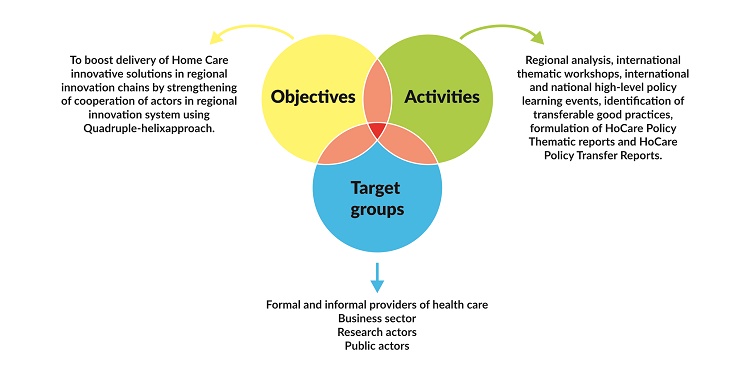
€1,634,013.00
Research and innovation
The objective of the OP EIC is to achieve a competitive and sustainable economy based on knowledge and innovation. The term “competitive” includes the ability of local companies to become competitive at world markets thanks to delivery highly innovative solutions and such create new jobs. The term “sustainable” accentuates the long-term horizon of competitiveness, which also includes the environmental dimension of economic growth.
Characteristics:
The programme is focused on the promotion of research and development for innovation, development of SMEs’ entrepreneurship and competitiveness, energy savings and development of high-speed internet access networks and information and communication technologies.
Priority or Measure Concerned:
Priority axis 1 Development of Research and Development for Innovations – this priority directly targets delivery of innovative solutions as defined in RIS3, including Home Care solutions
Reasons why it should be improved:
Main challenge for the improvement lies in strengthening innovation performance of domestic enterprises and increase their abilities and capacities. The number of the local origin entities participating in innovative chains should significantly rise together with number of innovative projects and efficiency of using supportive funding.
Objective:
Priority or Measure Concerned:
Reasons why it should be improved:
This Structural Fund is new instrument & it is prepared for the period 2014-2020, which means it will be regularly updated and it needs to be improved. There are several actions aimed towards strengthening research, technological development, innovation and quadruple-helix cooperation, but not much emphasis is given to the links between SMEs innovations and area of Health care (telecare, telehealth). There should be a better mechanism for co-ordinating activities in telecare and telehealth within and between government directorates, research organisations, the (health) care services and SMEs.
Objective:
“Promotion of holistic, integrated, complex and multi-parameter solutions that will enhance the competitiveness of the priority sectors”.
“Expansion of the ability of the RTDI system to produce results of high standards and utilize them for the benefit of the competitiveness of the economy and social advancement/progress”
“Development of substantial/valid links and synergies between the elements of the guardable helix”
In sectors: “Health: e-health… In addition, the Environment and the ICT were defined as important sectors of horizontal character” and “ICT: ICT Application, Future Technologies”
Priority or Measure Concerned:
Priority Axis 2: “Fostering the use of ICT”
Priority Investment 2c: “Enhancing ICT applications for e-government, e-learning, e-inclusion, e-culture and e-health”.
Reasons why it should be improved:
The specific instrument refers primary to the public, semi-public and local authorities on national level. A more inclusive strategy should be followed, therefore through the project’s activities we will seek to examine how the quadruple-helix approach could be adjusted and fit in the selected measure.
Objective:
Encouraging business investment in R&D, development of relations and cooperation between enterprises, R&D centres and the university sector, in particular the promotion of investment in the development of products and services, technology transfer.
Characteristics:
According to the needs identified at national level within OPIC 2014-2020, this priority axis includes support for technological development and innovation in order to increase innovation activities of enterprises.
Priority or Measure Concerned:
Priority axis 1 is “Technological Development and Innovation" (TO1), which is in line with the Innovation Strategy for Smart Specialisation (RIS3);
Reasons why it should be improved:
As the scale and scope of the instruments for answering the societal challenges increases, their interaction becomes more important, as do constraints on administrative feasibility. Current approach focus purely on triple-helix cooperation, the clear link between delivery of innovative solutions and needs supported by another Structural Fund in Bulgaria is missing. To maximize efficiency of allocated funds, there should be introduced quadruple-helix approach in OPIC to interlink needs for innovation with delivery of innovation and also to further incorporate the aspects of public driven innovation into the OPIC framework.
The COP 2014-2020 addresses the challenges stemming from the low support for RDI and the under-developed ICT services and infrastructure. COP aims to contribute to bolster the competitiveness of the Romanian economy. The main direction of investment in RDI is to build a more compact and modern R&D environment that focuses on the businesses' needs and to deliver innovation and research outputs of highest quality.
COP supports investment to economic competitiveness particularly in respect of (a) insufficient support for research, development and innovation (RDI) and (b) ICT infrastructure underdeveloped and so, by default, undeveloped services, thus positioning itself as a driver of horizontal interventions in the economy and society, capable to induce growth and sustainability.
Priority Axes:
A1. Research, development and innovation supporting economic competitiveness and the development of businesses
A2. Information and communication technologies for a competitive digital economy
Reasons why it should be improved:
There was experienced the low rate of SF absorption in COP instrument in previous programing period. The reasons were lack of high quality project, complex application and implementation process, which was not suitable to innovative enterprises and lack of clarity and mainstreaming of opened calls to address priority areas, where is the strong potential in Romania to deliver innovative solutions in regional innovation ecosystems.
Objective:
Promotion of innovations in SME’s. Instrument has been designed to encourage co-operation between business and research institutions.
Characteristics:
Support is done through Innovation vouchers which are more in line with the philosophy of today’s companies, where small, short term projects dominates and best way to support is affording “quick money”. The appeal of the innovation vouchers scheme is related to its simplicity and low administrative burden both for beneficiaries and administrators.
Supported activities:
Research;
Technological development;
Technical feasibility studies.
Innovation voucher helps business and scientific co-operation, speed up research and knowledge transfer and innovative business ideas and commercialization of research results. Companies are encouraged to use the latest scientific achievements and research.
Priority or Measure Concerned:
Priority axis 1 - Strengthening research, technological development and innovation
Reasons why it should be improved:
On one hand, responsible body (Ministry of Economy) feels that more impact could be generated from the funds. On other hand, evolution of businesses and their needs clearly indicates that traditional public support services should be more dynamic and versatile. Drawing from the past experience and existing data, the main future challenges for this instrument is related to increasing the efficiency and impact and introduction of alternative solutions – like Quadruple-helix approach.
GINOP is the largest national SF programme of Hungary, allocating more than 8 billion Euro for improving the country’s competitiveness. It mainly targets less developed regions, but applying the relevant flexibility rules, also partly addresses Central-Hungary. It creates synergies and complementarities among all other SF programmes of Hungary, incl. the Competitive Central-Hungary regional OP. Priority Axis (PA) 2 is dedicated to improving research, technology and innovation via 1) strengthening R&I capacities and improving connectivity with international networks to increase participation in H2020 programme; 2) increasing R&I activity in businesses; and 3) improving strategic R&I networks and cooperation among innovative SMEs and research institutions. PA8 complements these measures with financial instruments to be made available to SMEs. Innovation support under PA2 and PA8 specifically targets smart specialisation sectors identified by the national S3, incl. the priority “Healthy society and wellbeing”, which promotes the widespread use of advanced health industry technologies in order to maintain and improve the general health condition of the society.
Past experiences shows there is a risk of lack of high quality projects, such impact and efficiency of allocated funds is endangered. Aim is to implement in GINOP structures of Quadruple-Helix approach to target this issue.
Targeted structural fund ( in short Madeira 14-20 ) seeks to mitigate the problems of accessibility to social infrastructure and health care of the citizens of RAM, especially of their rural populations, through investment in the regional health system, with its strategic priorities:
• Delivery of innovative Home Care solutions by regional companies ( in field of health and social care)
• Strengthening the capacity assistance;
• Health care delivery to users;
• Strengthening disease prevention and health promotion through structured investments at the level of primary and hospital health care and in cross-cutting areas of support.
With HoCare project the IDERAM - Business Development Institute of the Autonomous Region of Madeira aims to improve the effectiveness, efficiency and impact of this specific policy instrument by realizing actions related to the provision of home care services developed through a quadruple helix strategy involving governmental organizations and its structures, universities, companies and business associations as well as movements of citizens committed to the well-being and social inclusion. The main issue to be target is the weakness in delivery of innovative solutions targeting local needs in the framework of tackled Structural funds.

Interregional Seminar and Workshop "Regional responses to COVID-19 crisis on Home Care ICT sector" in Bucharest, Romania on 20-21 Sept.,
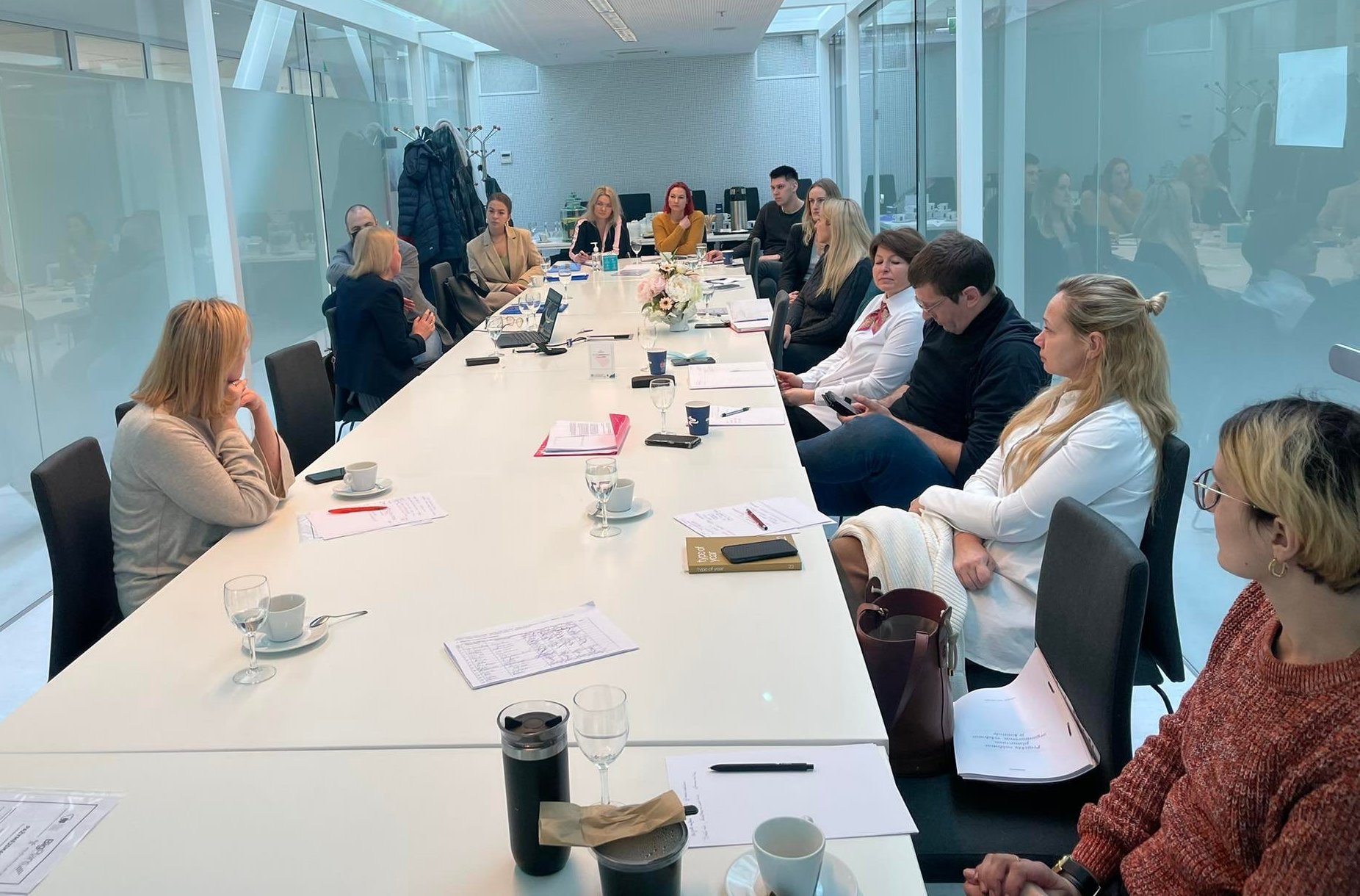
Local Stakeholders Group Meeting organized in Lithuania

Local Stakeholders Group Meeting organized in Czech Republic
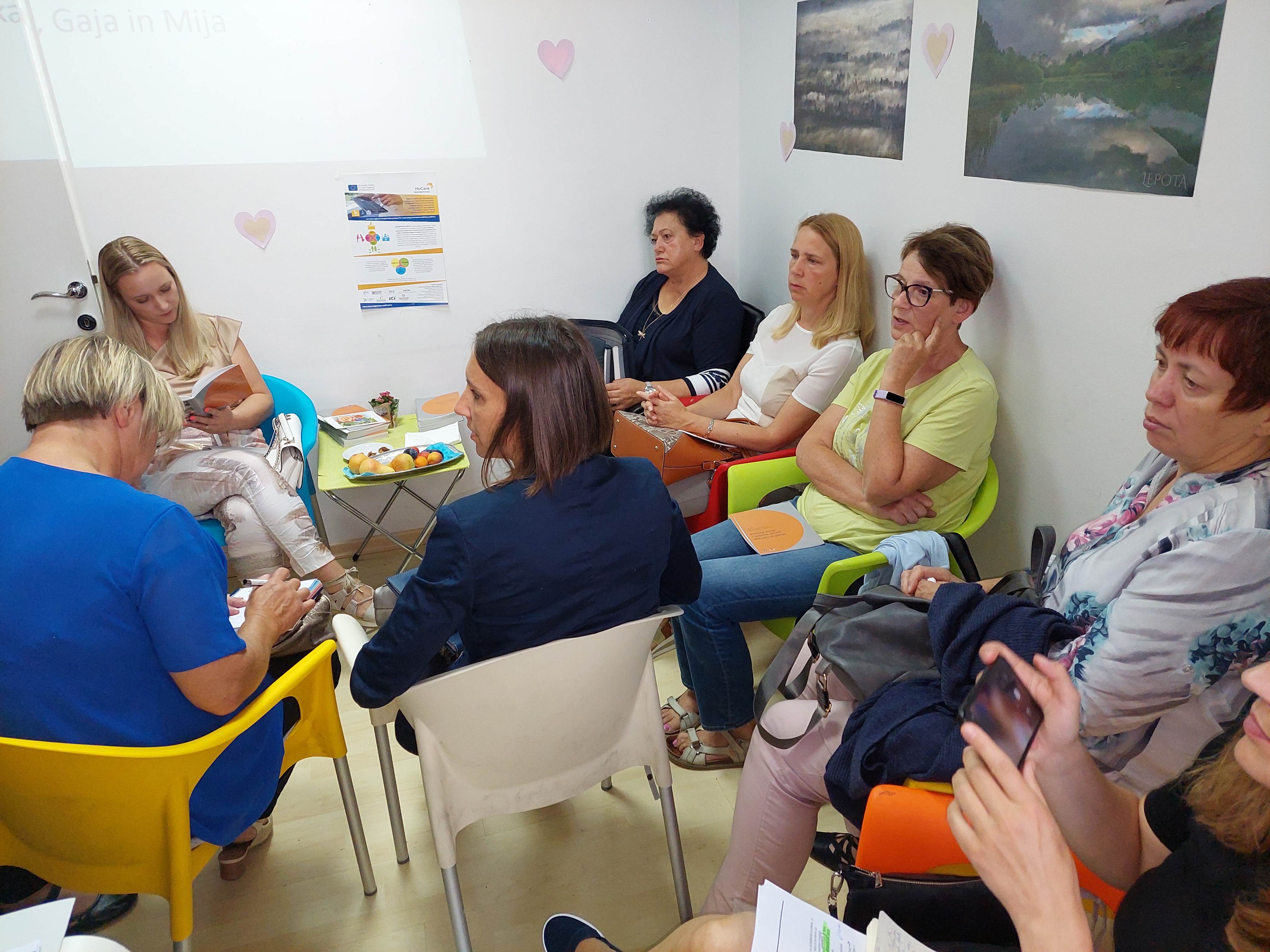
Local Stakeholders Group Meeting organized in Slovenia - August 24th
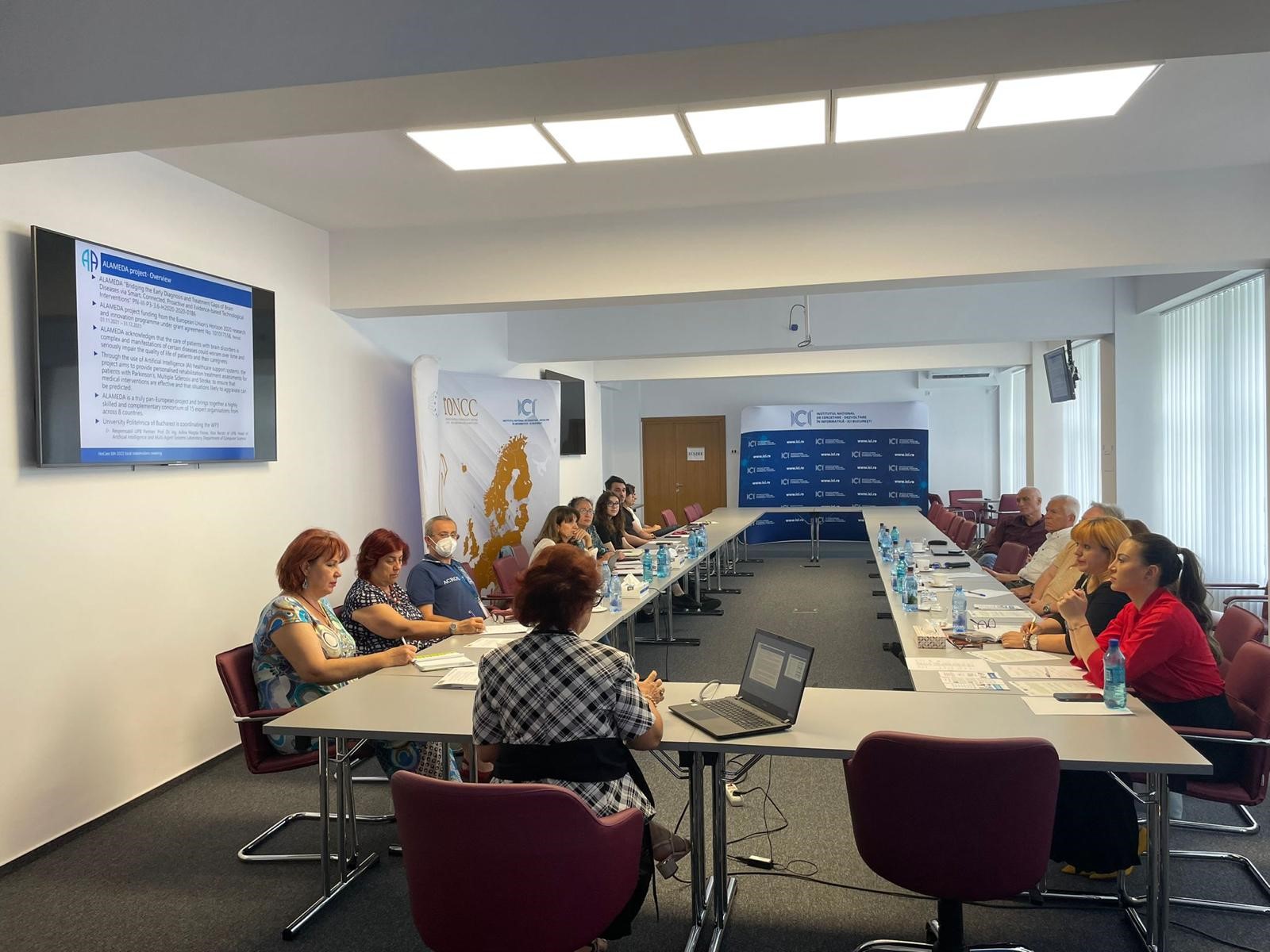
The 6th Local Regional Stakeholders Group Meeting: ”Managing the Digital Divide during COVID-19 crisis for improving Home Care and related public health legal f
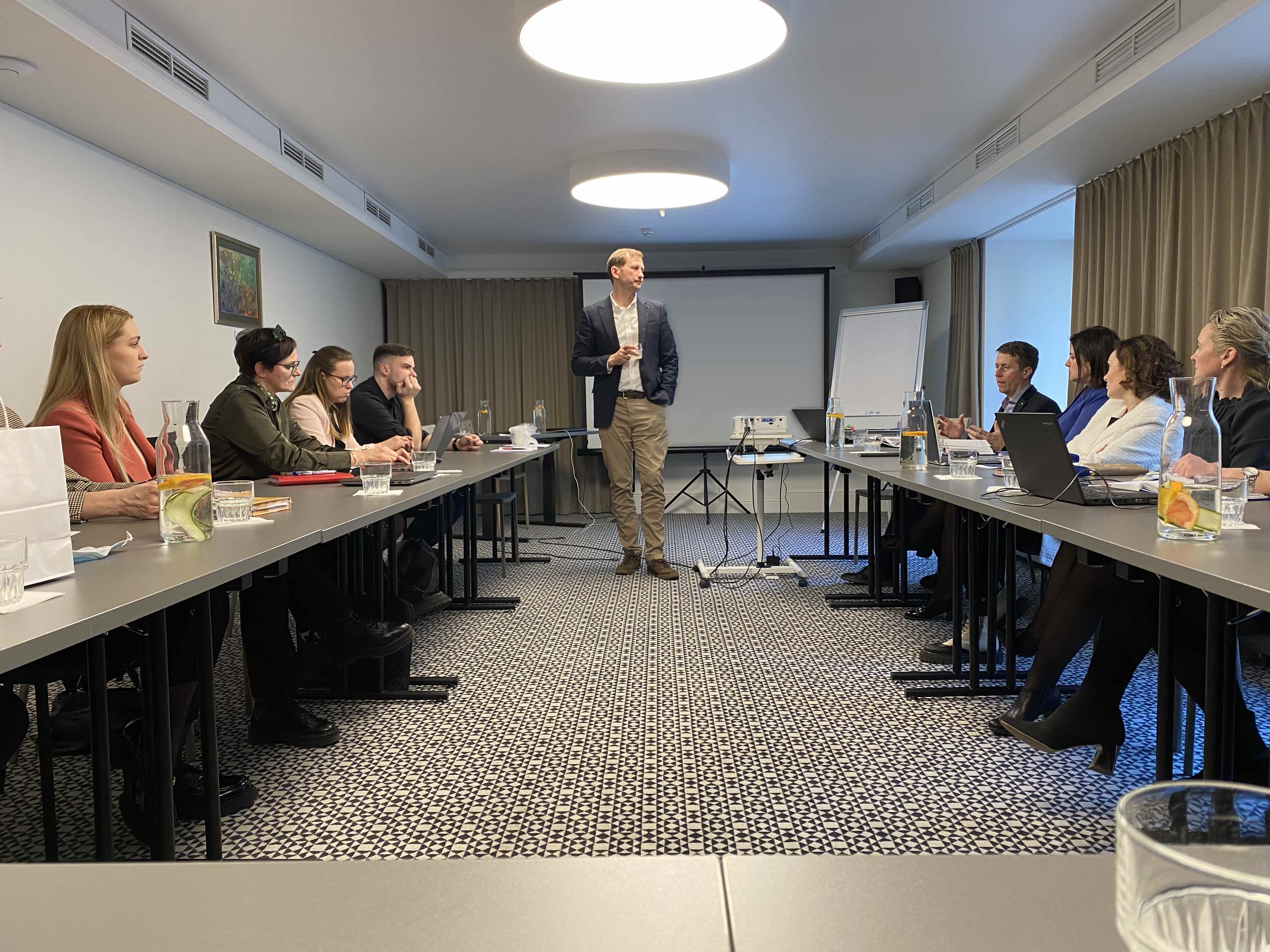
Lithuanian Innovation Centre (LIC) continues to work with HoCare project stakeholders.

National Directorate General for Hospitals (NDGH) organized the 2nd Regional multi-Stakeholder Group (RMG) meeting of the Interreg Europe HoCare project on 13th
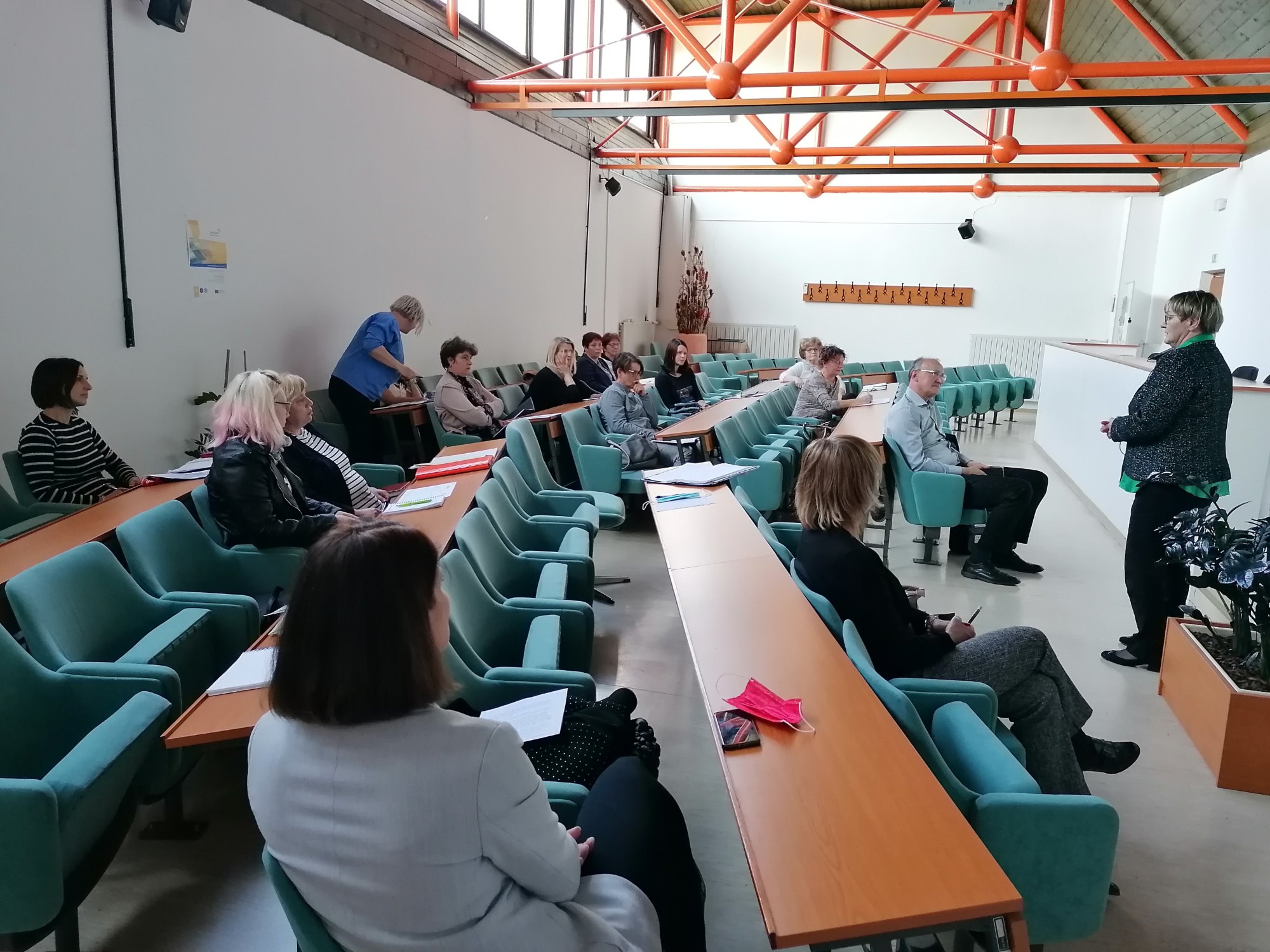
Local Stakeholders Group Meeting organized in Slovenia - March 23rd, March 24th, March 28th and March 29th 2022
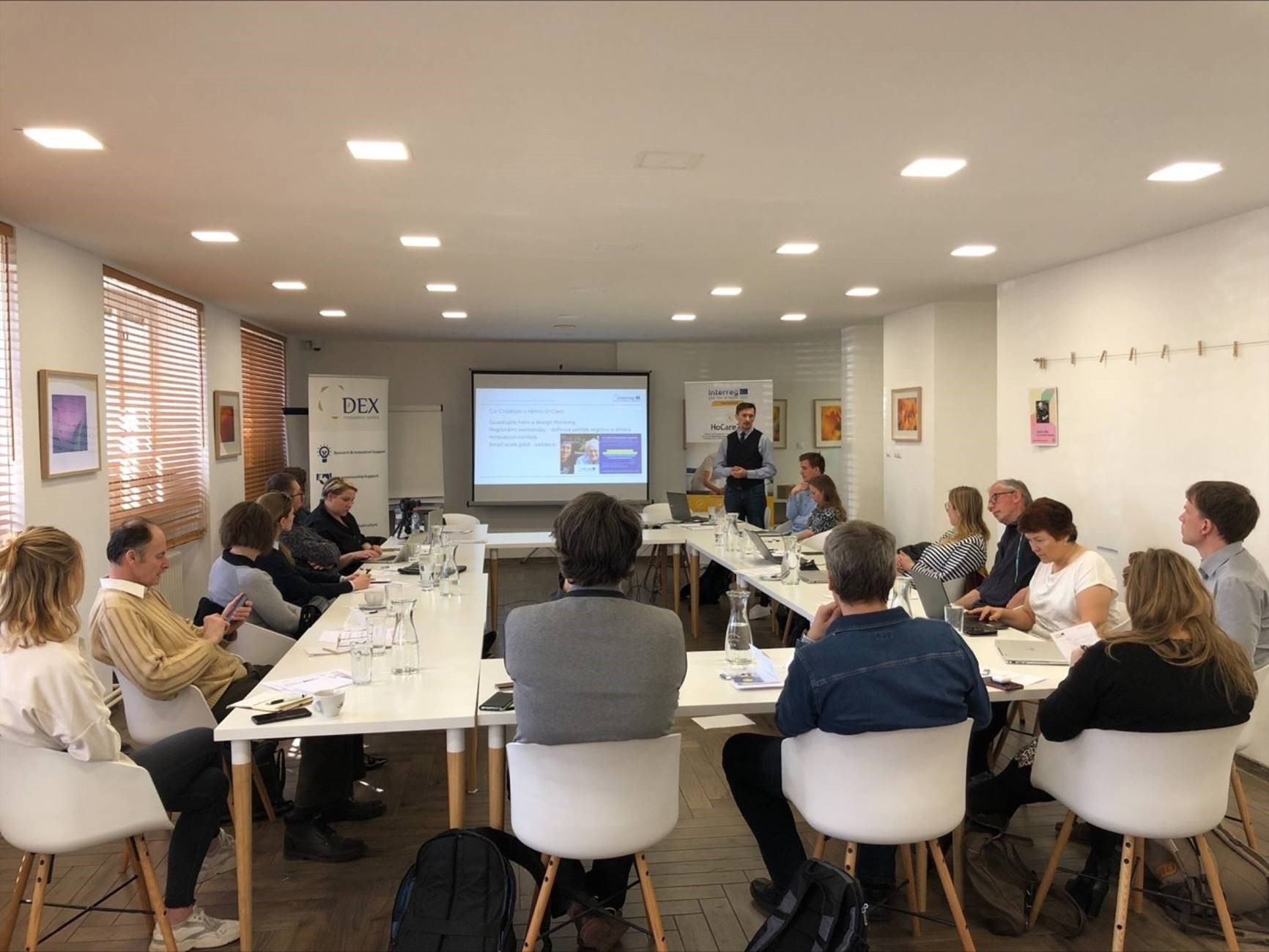
HoCare extension and DEX IC connects experts from the branch of social works who lead, care about and bring innovation.
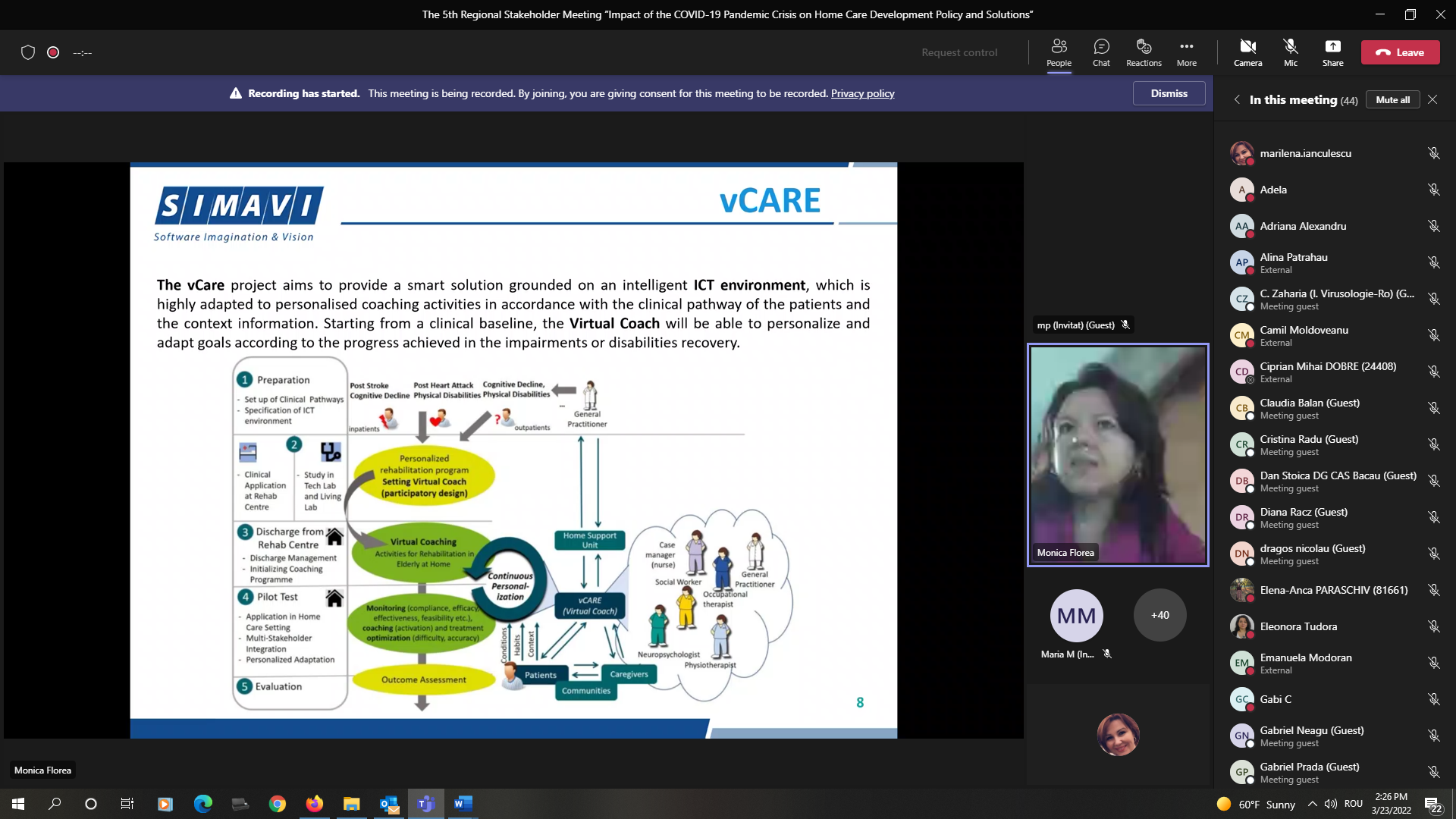
The 5th Local Regional Stakeholders Group Meeting: ”Impact of the COVID-19 Pandemic Crisis on Home Care Development Policy and Solutions”